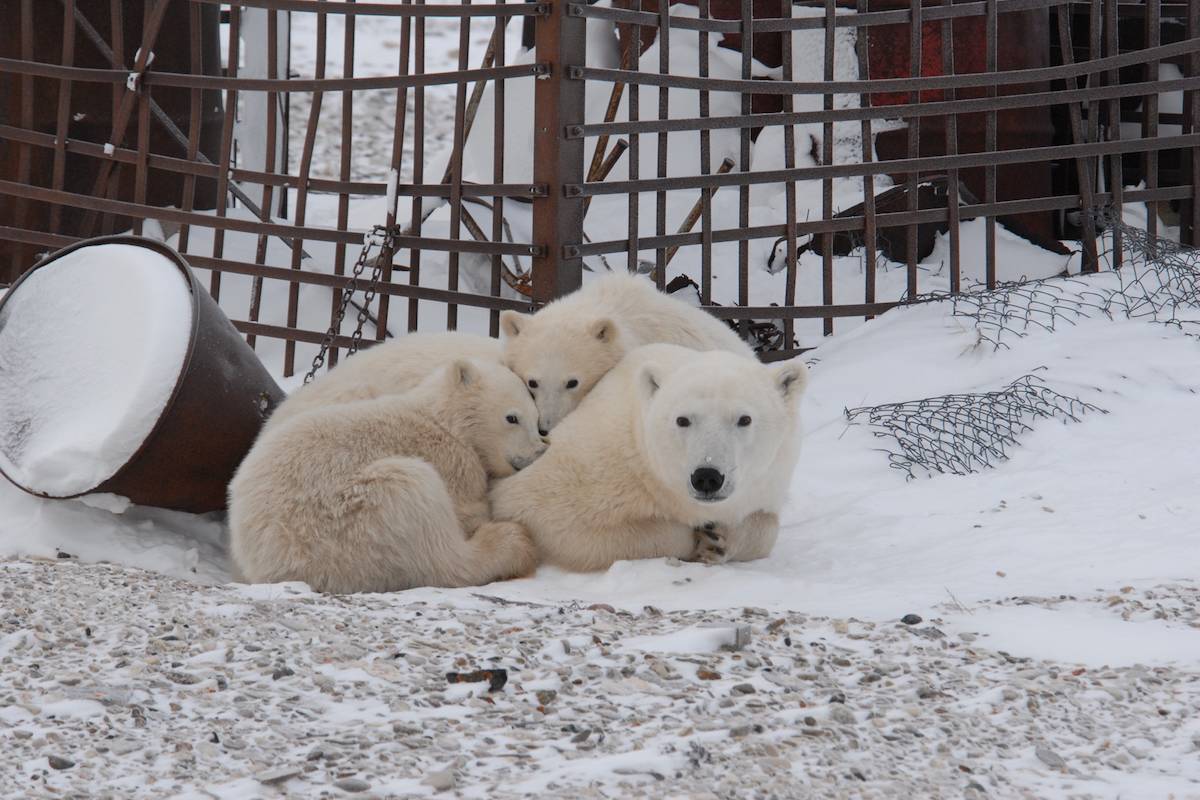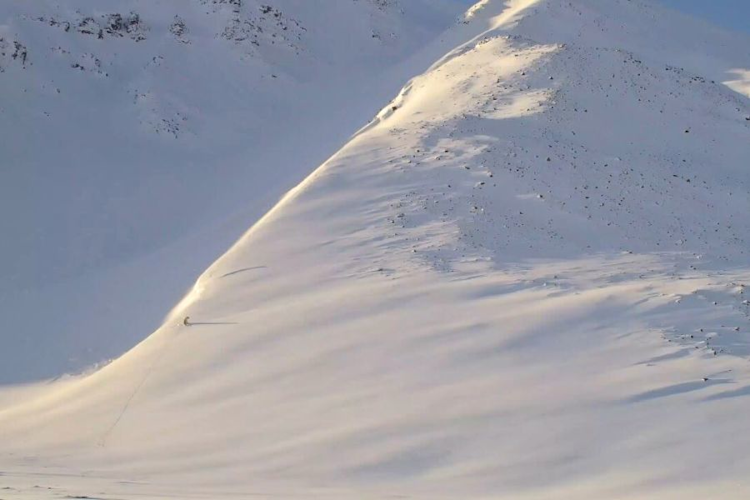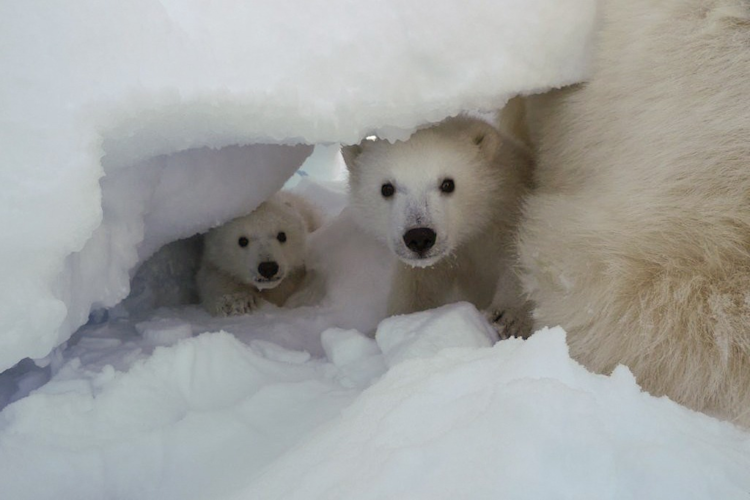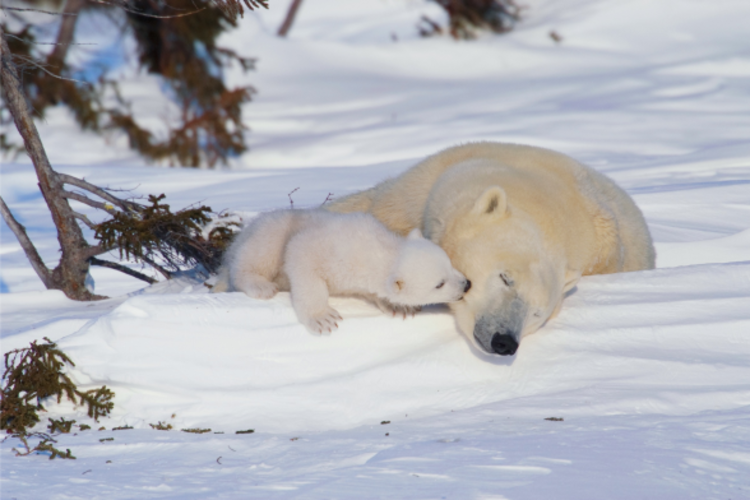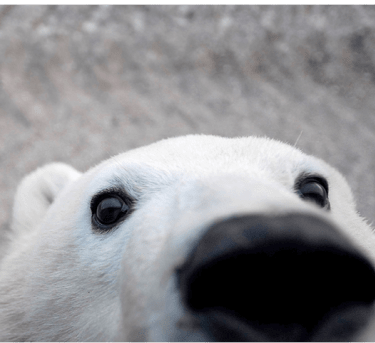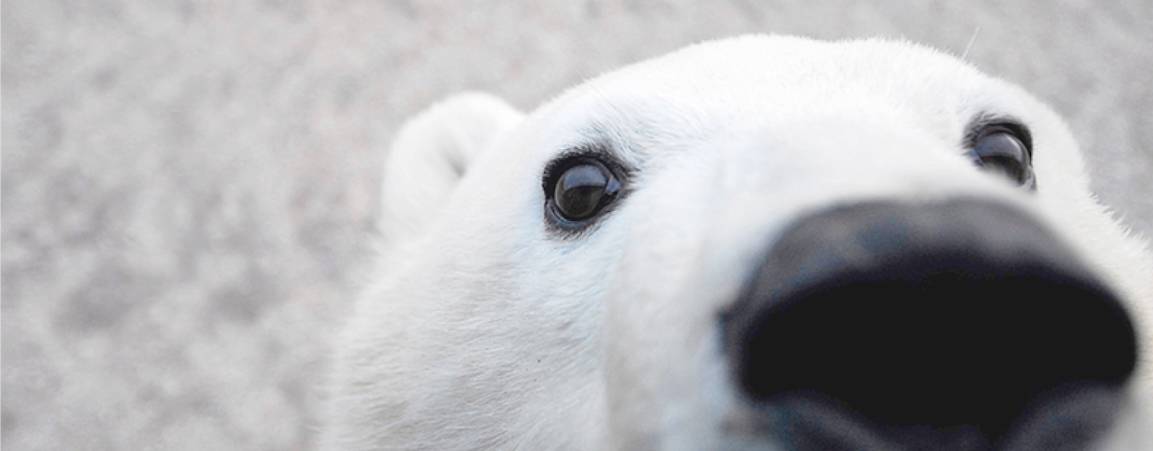Highlights from the report include:
Issues:
Increasing bear-human interaction: diminishing sea ice due to global warming is forcing polar bears to stay on land longer, fasting for longer periods of time. There is also increasing human activity in the North. With hungrier bears and more people, human-bear conflict is on the rise–which often leads to harm of at least one of the species.
Human food availability: increasing human activity in the North is accompanied by more food and waste, which can attract hungry bears and become a flashpoint for human-bear conflict.
Health issues for polar bears: when feeding on human food waste, the bears often ingest plastics, toxins, and may be more exposed to disease.
Recommendations:
Increasing risk calls for swift action: unless anthropogenic food sources are secured, including waste, threats to human safety and the viability of some polar bear subpopulations will continue.
Proactive solutions are necessary: problems can become chronic, as bears will remember where they found food and continue to return over time. Once bears are conditioned to a food source, the problem is harder to manage, and more dangerous for everyone involved.
Left unaddressed, situations can worsen rapidly: changes in the level of polar bear use of anthropogenic foods can occur rapidly, as seen in cases like the invasion of 52 polar bears in Belushya Guba, Russia; the bears were drawn to an open dump, with some entering the village proper.
Tactical approaches: waste management solutions will be unique to each region and community, but may include both hard and electric fencing, incineration, cap and fill where feasible, landfill monitoring, bear-resistant waste cans, and increased access to deterrence and hazing tools/training.
Quotes from the authors include:
Lead author Dr. Tom S. Smith, Professor of Wildlife Sciences at Brigham Young University: “Securing food waste in polar bear country is one thing we can do right now to make a positive difference for both polar bears and humans. The report shows the great opportunity we have to protect the polar bears we do have, and get ahead of an issue we expect to worsen due to climate change.”
Co-author Geoff York, Senior Director of Conservation at Polar Bears International: “There’s been an increasing need for this report. We’ve noticed an uptick in encounters between polar bears and humans over time, and wanted to get ahead of those statistics with information that wildlife managers and policymakers can start implementing today. While every community will have a unique approach, the important message is that proactive measures are essential for protecting bears and people.”
Co-author Dr. Megan Owen, Vice President-Conservation Science at the San Diego Zoo Wildlife Alliance: “Problems of food-conditioning in polar bears have been reported in every country where polar bears exist. While each community’s solution may differ, we know that we already have the technology and solutions to solve the problem of human waste attracting polar bears. We need immediate and concerted efforts throughout the Arctic to apply solutions such as education, bear-proof garbage storage, law enforcement and adequate community resources.”
Co-author Dr. Andrew E. Derocher, Professor of Biology at the University of Alberta: “By examining case studies across the Arctic, this study provides diverse perspectives and solutions. Bear attractants range from large open dumps to smaller ephemeral attractants like seasonal camps. There is a pressing management need to increase human safety and reduce conflicts. Some issues, however, remain poorly studied but the congregation of bears around waste could increase disease transmission between bears and other scavenging species.”
The report is authored by Tom S. Smith of Brigham Young University, Andrew E. Derocher of University of Alberta, Rachel Mazur of the National Park Service, Geoff York of Polar Bears International, Megan Owen of San Diego Zoo Wildlife Alliance, Martyn Obbard of Ontario Ministry of Natural Resources and Forestry and Trent University, Evan Richardson of Environment and Climate Change Canada, and Steven C. Amstrup of Polar Bears International.
The report provides insights to help northern communities find the solutions for their community, whether it be a town or a camp. Human-bear conflict may become an increasing source of polar bear mortality if left unaddressed. Managing human food waste is something that can be addressed now and with immediate results.
About Polar Bears International
Polar Bears International’s mission is to conserve polar bears and the sea ice they depend on. Through media, science, and advocacy, we work to inspire people to care about the Arctic, the threats to its future, and the connection between this remote region and our global climate. PBI is the only nonprofit organization dedicated solely to wild polar bears and Arctic sea ice, and our staff includes scientists who study wild polar bears. The organization is a recognized leader in polar bear conservation. For more information, visit www.polarbearsinternational.org
Media Contacts
Annie Edwards, for Polar Bears International
annie@fabricmedia.net
Melissa Hourigan, for Polar Bears International
melissa@fabricmedia.net
720-608-1919
Lead Image Caption: Polar bears are smart and curious, quick to investigate potential food sources. If they find food in a community, they will return again and again, endangering people and putting themselves at risk. When this happens, not only is the mother bear putting herself in harm’s way, but she is teaching her cubs dangerous behavior.
